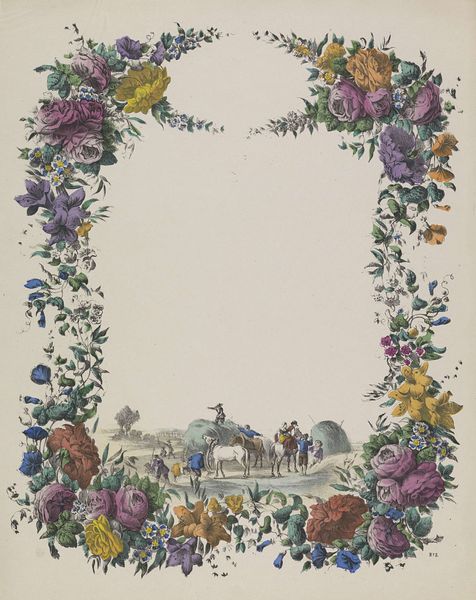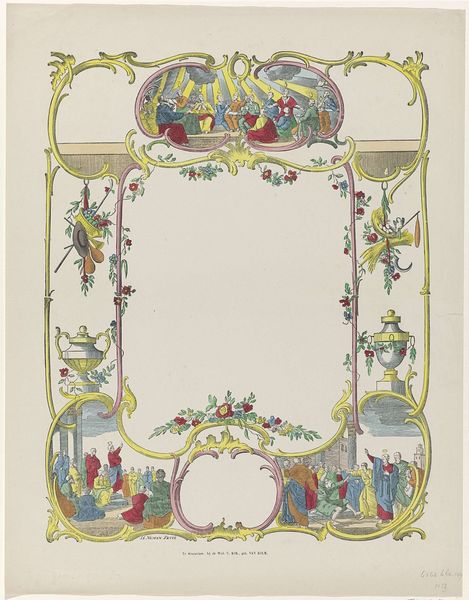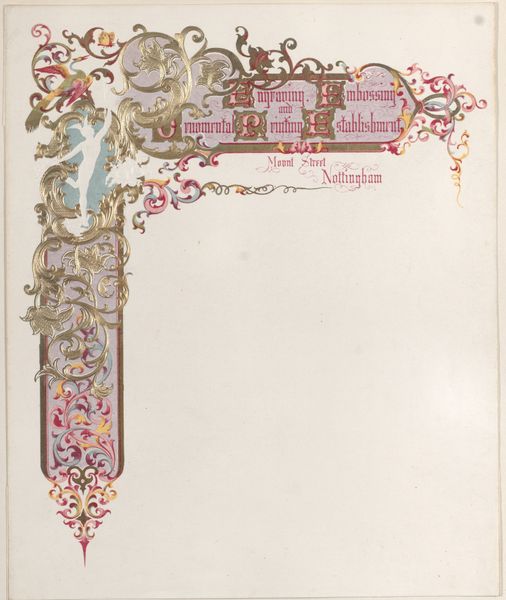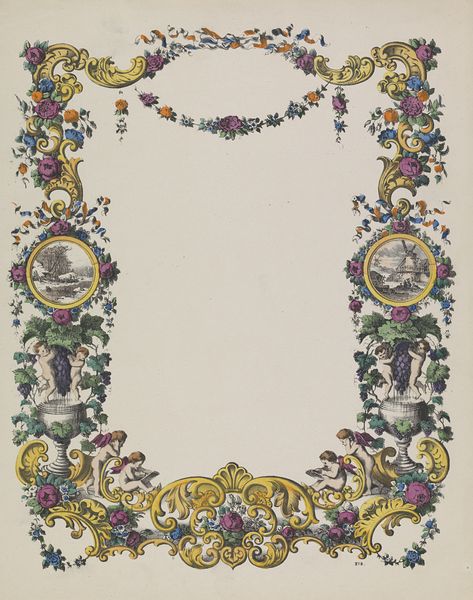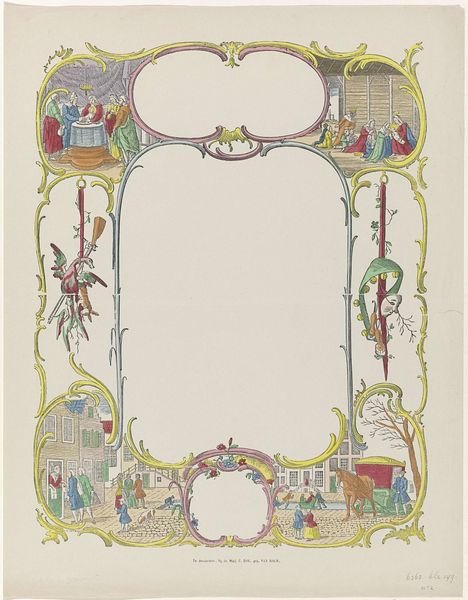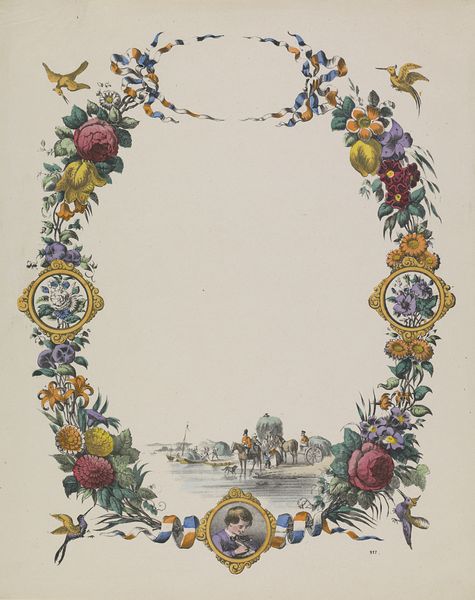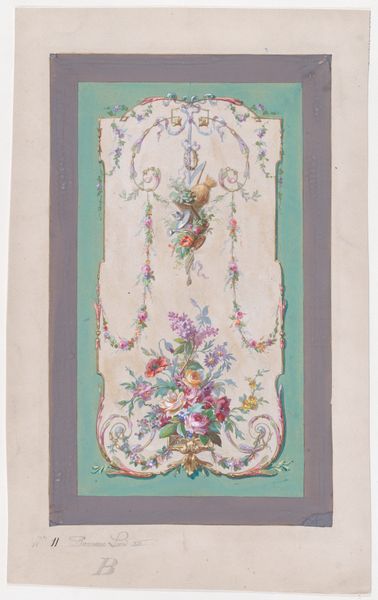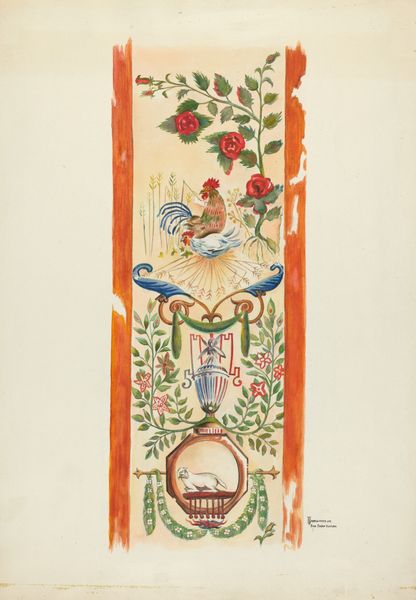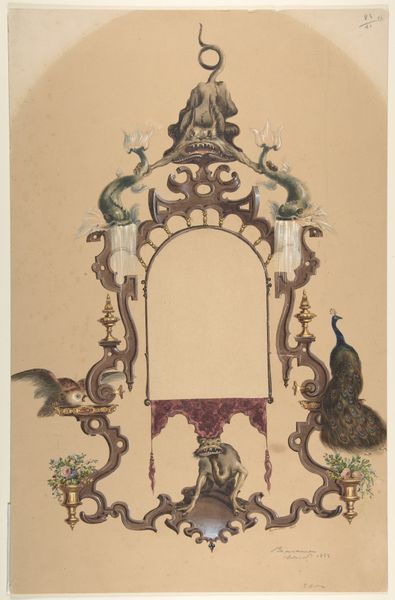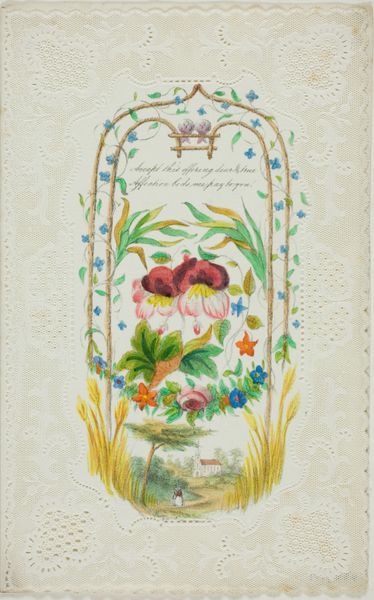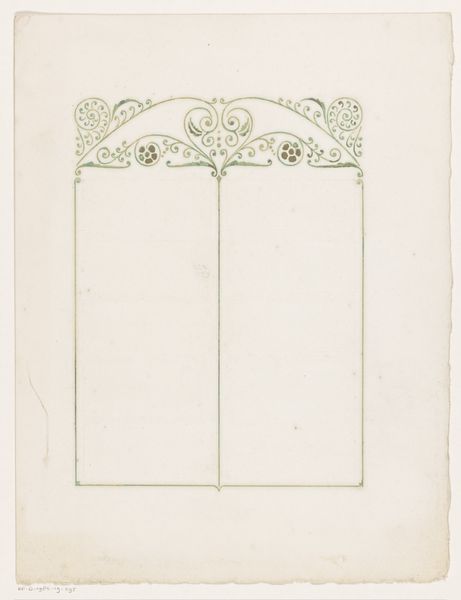
Dimensions: height 422 mm, width 340 mm
Copyright: Rijks Museum: Open Domain
Curator: At first glance, this feels incredibly delicate. Like a pressed flower collection adorning a cherished letter. Editor: It’s a wonderful artifact—an anonymous print, watercolor and water colours, titled "Wensbrief met gezicht op Delft," created sometime between 1829 and 1880, here at the Rijksmuseum. These personalized letter sheets offer a glimpse into 19th-century social customs. Curator: Yes, there’s something distinctly sentimental and class-based about it. The intricate borders – a strange mix of gothic architecture and floral garlands – frame what seems almost like an afterthought: a cityscape of Delft. It speaks to the labor invested, doesn’t it? Editor: Precisely. Think about the material processes: the printmaking, the careful application of watercolors. The creation of these elaborate letter sheets must have been quite a cottage industry. Were these products made by women, perhaps? There is clearly decorative-art influences at play. Curator: And that craftsmanship exists to, in essence, soften the act of communication itself. I am drawn to analyze the way in which the Romantic sensibilities influenced it: this careful blending of natural beauty, architecture and a kind of gentle melancholy, offering social cues around correspondence. Is this kind of elaborate border meant to soften a potentially difficult message? Or elevate an otherwise mundane greeting? Editor: Possibly both. Consider the market for these objects; the consumer seeking something special. There’s an inherent tension, isn’t there, between mass production via printing and the desire for bespoke, personal expression? Curator: That’s fascinating. It really pushes us to question the hierarchy between art and craft and, further, what value was placed on labor itself. Looking closely, the perspective within the cityscape is somewhat flattened, prioritizing decorative impact. The artist's relationship to Delft seems less about accurate representation and more about symbolic capturing. Editor: The very notion of a "wensbrief"—a wish letter— is inherently optimistic, commercial. The material is the message. And that material, that process, those tiny decisions about color and composition— they all point to networks of making and distribution, of consumption and desire, playing out on this single piece of paper. Curator: I agree. What seemed simply pretty at first becomes layered with social, economic, and gendered readings. Editor: Absolutely. These ephemeral objects remind us to ask: who created them, how, and for whom? Curator: It is always pertinent to reconsider our perception. Editor: It's in exploring that labor and material context where we uncover its lasting impact.
Comments
No comments
Be the first to comment and join the conversation on the ultimate creative platform.
